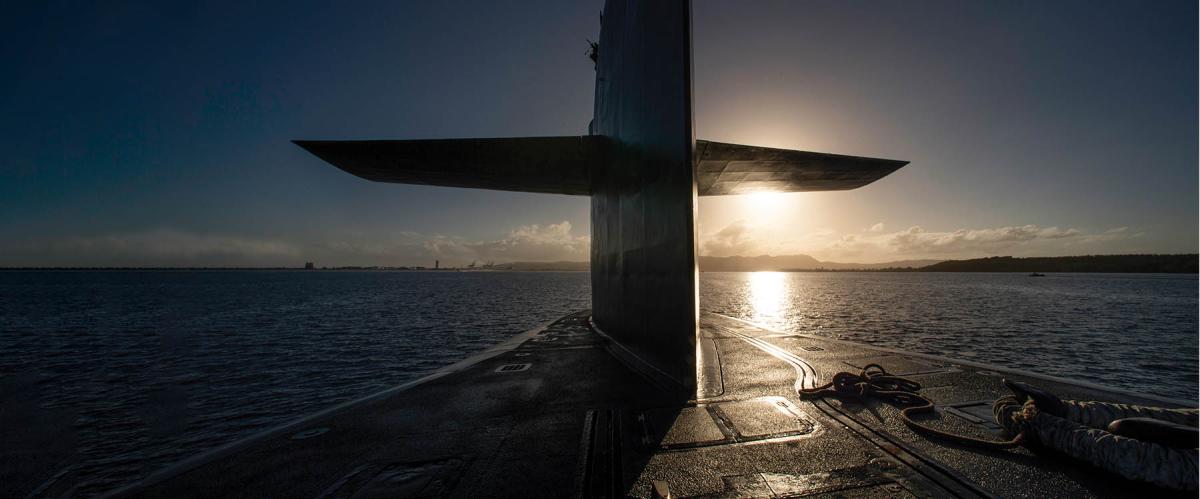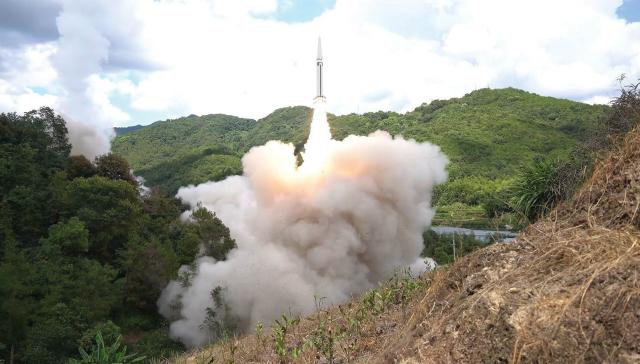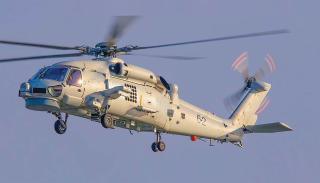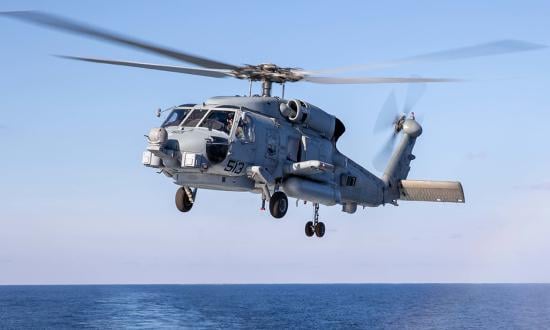In 1989, two years after resigning as Secretary of the Navy, John Lehman penned a review of British historian John Keegan’s latest book for The Washington Post. Keegan had established a name for himself in military history with his first two efforts, The Face of Battle and The Mask of Command. All his works—including the subject of Lehman’s review, The Price of Admiralty—followed a similar structure. Keegan would take three or four battles from different time periods, provide a detailed overview of each with specific emphasis on what it would be like for ground-level participants in the conflict, and then offer summary thoughts in a final chapter. For the most part, Lehman praised the book, with one blunt caveat: “The lessons-learned chapter is really hogwash. But actually the nonsense only takes up 10 pages, and the other 282 are so good that forgiveness comes easily.”1
What had Keegan written that so offended the architect of President Ronald Reagan’s 600-ship navy? Keegan argued that of the two dominant naval platforms to emerge from World War II—the aircraft carrier and the submarine—the future belonged to the latter. While the carrier had undoubtedly been the pinnacle of naval power up to that point, conditions would become increasingly hazardous for surface forces moving forward. As Keegan writes in the concluding chapter, “An Empty Ocean”:
The aircraft carrier, whatever realistic scenario or action is drawn . . . will be exposed to a wider range of threats than the submarine must face. In a shoreward context, it risks attack not only by carrier-borne but also by land-based aircraft, land-based missiles, and the submarine itself.2
Keegan’s analysis was heavily influenced by the only major naval engagement fought since 1945, the Falkland Islands War.3 During that conflict, British forces faced a relatively new threat—antiship cruise missiles (ASCMs) such as air-launched Exocets—and an old one, submarines. The Argentinian diesel submarine San Luis proved to be a particular thorn in the Royal Navy’s side, despite being poorly maintained, having a half-trained crew, and, most important, possessing torpedoes that did not work.4
In contrast, the Royal Navy’s nuclear-powered submarine HMS Conqueror sank Argentina’s principal capital ship, the cruiser General Belgrano, early in the war, effectively scaring the remainder of the Argentinian fleet to port. For the duration of the conflict, the British task force did not confront opposing surface ships but rather sporadic, but lethal, attacks from the air and harassment from under the sea.5 Keegan postulated that the threats to vessels on the surface would eventually become too great and the oceans would be “empty” with tomorrow’s combatants operating entirely beneath the waves.
Three decades after Lehman dismissed it, Keegan’s theory resonates regarding the challenges the U.S. Navy faces in the western Pacific. Increased threats to aircraft carriers and other surface combatants from “land-based aircraft, land-based missiles, and the submarine itself” is a fair description of the antiaccess/area-denial (A2/AD) capabilities China has developed. More broadly, the future of undersea warfare is likely to be a major determinant of the long-term military balance between China and the United States.
Estimating the Undersea Balance
China’s naval modernization has been remarkable in its scope and success. The one curious and consistent exception has been high-quality nuclear submarines.
During the Cold War, the United States and the Soviet Union were each able to attain a level of super-quieting with their nuclear-powered attack (SSN) and ballistic-missile (SSBN) submarines that significantly decreased their detectability, including rendering them difficult to detect with the Sound Surveillance System (SOSUS). The U.S. Permit-class SSNs achieved this in the early 1960s, and the Soviets with their Akula-class SSNs in the mid-1980s.
By contrast, the level of quieting in China’s current SSN, the Shang class, is estimated to be on par with Soviet designs from the 1970s, before the quieting breakthroughs that produced the Akula. Similarly, China’s SSBNs, the Jin class, have noise levels comparable to Soviet SSBNs that first put to sea more than four decades ago.6
It also is suggestive of the true state of relations between China and Russia: Moscow has avoided transferring acoustic quieting technology to Beijing for its nuclear submarines. Chinese attempts to hack the computer systems of Russia’s Rubin submarine design bureau in 2021 only reinforce the notion that this is one area of military technology Moscow will not share voluntarily with Beijing.7 But this could change if Russia becomes overly dependent on China in the face of ongoing failures in Ukraine.
The People’s Liberation Army Navy (PLAN) has further compounded this weakness by underinvesting in antisubmarine warfare (ASW) capabilities, which were neglected throughout most of the modernization. Even as China deployed wave after wave of new ships in the first decade-and-a-half of this century, many lacked organic ASW sensors such as towed-array and variable-depth sonar systems.8 China also had limited aerial ASW assets. Helicopters and fixed-wing aircraft (such as the U.S. Navy’s P-8) can significantly augment ASW and expand the zone of coverage for sensors.9 These were strange oversights for a country constructing a massive surface fleet.
More recently, China has begun equipping most of its newer frigates and corvettes with sophisticated sonars and has also fielded a capable missile-launched torpedo, the Yu-8.10 Just as important, China has introduced the KQ-200 maritime patrol aircraft into service.11
Even so, ASW is not a “turnkey” capability. Deploying dedicated sensors and platforms to hunt for submarines is just one part of the solution. Embedding ASW into Chinese naval culture will take years, and mastering its practices will not be an overnight transition. China is only now beginning to make up ground. Adding to the overall challenge, the Asian littoral is a very difficult ASW environment, given its overall shallowness and high volume of maritime traffic.12 From the Chinese perspective, so long as it cannot definitively defend against U.S. undersea threats, it will never be able to claim true control over its adjacent seas.
A Regional or a Global Naval Power?
Unless the PLAN can level the undersea playing field, it will remain a regional navy despite its impressive size. The Asian littoral is one small subset of the world’s oceans, albeit a particularly valuable one. It is understandable why Beijing seeks dominance over it. Yet, it is also important to grasp the limits of China’s current reach—maritime supremacy in the narrowly defined “western Pacific” is important but does not equate to a global challenge to U.S. naval superiority. To mount such a challenge, China would have to expand its expeditionary operations and a central part of that would need to be vastly improved undersea warfare capabilities.
Much has been made of China’s three aircraft carriers—the Shandong and the Fujian, which were built domestically, and the Liaoning, which was purchased from Ukraine and refurbished in Chinese yards. But—as far as can be determined from open sources—only the Liaoning appears to have deployed outside the first island chain, doing so a handful of times to conduct brief open-ocean exercises before returning to home waters.13 Given the PLAN’s poor state just 25 years ago, this is a remarkable achievement. That said, it is simply not comparable to the monthslong carrier deployments the U.S. Navy regularly conducts—always with multiple surface platforms—halfway around the world.
Since 2008, China has maintained a small antipiracy flotilla in the Gulf of Aden and more recently established its first overseas base in Djibouti to support it. But this has largely been the extent of China’s standing deployments outside the Asian littoral. China’s logistics capability for large, sustained blue-water operations remains limited.14
As with all things naval, China has made important strides, including deploying quality at-sea replenishment ships, such as the Type 901 and 903. But there are inherent limits to what even the best supply ship can do; one Type 903 can support perhaps two or three warships for just a fortnight.15 Exclusive reliance on underway replenishment is untenable. Without a significant expansion of overseas basing, the PLAN’s ability to deploy large forces at a distance will remain constrained.
In contrast, if the PLAN was able to deploy super-quiet SSNs on par with the best U.S. and Russian boats, that would represent a major strategic change—not only for its ability to defend on the open ocean but also in terms of China’s capacity to threaten U.S. naval forces well outside the first island chain. Such a capability would give China transoceanic reach with single platforms, absent the extensive logistical support or need for the overseas bases a carrier strike group requires.
Keegan was prescient: It will be submarines, not aircraft carriers, that determine the future of Chinese naval power.
The Cost of Emptying the Ocean
Of course, how the United States manages its own submarine forces will also factor into the military balance in the Pacific. If there is a problem with exploiting the U.S. comparative advantage in undersea warfare, it is that the Navy may simply lack sufficient numbers. The total U.S. submarine force is currently 68 platforms.16 But this number includes 14 Ohio-class SSBNs, which have no conventional combat role, as well as four Ohio-class SSGNs, converted SSBNs that have been retrofitted to carry conventional missiles and support special operations forces. And the SSGN missile packages are optimized for land attack, not an antiship role.
That leaves 50 submarines for direct naval combat: 19 of the latest Virginia-class SSNs, 28 of the older Los Angeles–class boats, and three of the unique Seawolf class.17 However, the Seawolf-class USS Connecticut (SSN-22) is indefinitely sidelined because of an undersea collision in October 2021.
On paper that still seems like an impressive force. But an old rule-of-thumb holds that for every vessel operating, two others are required—one preparing for deployment and a second standing down from recent operations. The necessary cycle of ship maintenance and crew rest and training means that only one-third of the fleet is deployed at any one time. More could be deployed in a crisis, of course, but it is still useful for estimating availability. Applied to the numbers cited above, only about 16 submarines would be on station, with the potential to surge the third of the force preparing for deployment.18
But another question needs to be answered: How many of those submarines are committed to the Pacific? Here, the Navy’s global commitments are a detriment. A survey of open-source information on Navy submarine deployments in the Pacific suggests that only 20 SSNs are homeported in that ocean—including the two Seawolfs.19 Back-of-the-envelope calculations thus suggest that just six or seven SSNs might be available at the outset of a conflict with China, with a similar number potentially working toward deployment that could be rushed to sea in the event of war. Would perhaps a dozen SSNs be enough?
There also is the question of how many submarines the United States will have in the coming decades. U.S. attack submarine numbers are expected to decline until 2028, dipping to just 46 boats before numbers begin to slowly revive.20
New Navies of Submarine Warships?
Over the next two decades, the primary procurement priority for the Navy will be the replacement for the Ohio-class SSBNs, the Columbia-class.21 While important to the nation’s strategic nuclear posture, these submarines will make no meaningful contribution to a conventional naval engagement in the western Pacific. Still, the prominence of these submarines in Navy budgets could make it difficult to argue for an increase in funding for procuring Virginia-class SSNs faster than the planned two per year.
More radical suggestions such as purchasing novel, special-purpose undersea platforms—replacements for the aging, retrofitted Ohio-class SSGNs, for example—are likely to meet stiffer resistance. Yet the specialized abilities of the SSGNs could be crucial in a conflict with China, even as they do not function like traditional attack submarines. When not optimized to support special forces, an Ohio-class SSGN can carry up to 154 Tomahawks—as much as perhaps five or six destroyers and cruisers combined, depending on the mix of missiles carried. If strikes on mainland China were deemed essential in a Taiwan scenario (and worth the considerable escalatory risk), SSGNs might stand the best chance of penetrating inside the first island chain to conduct them. One can envision an advanced force of SSGNs launching missile strikes to essentially “blind” Chinese land-based sensors, creating a marginally safer environment for U.S. surface forces to enter littoral waters.
Alternatively, the SSGNs could be equipped with the planned Maritime Strike Tomahawk, turning the submarines into something akin to the “carrier killer” SSGNs the Soviet Union developed to counter carrier battle groups.22 A single platform launching dozens of ASCMs against a Chinese task force would be an impressive display. Here, again though, the small fleet of existing SSGNs is insufficient—and only two are homeported in the Pacific.23
Just as Keegan outlined the primary challenge of modern naval warfare in his “empty ocean” discourse, he may also have identified its solution: “new navies of submarine warships.”24 Whether the Ohio-class SSGNs prove to be forerunners to Keegan’s “new navy” or simply anomalies in the Navy’s force structure remains to be seen.
From Battleship to Carrier to Submarine?
To be clear, surface forces will not be irrelevant anytime soon. There are still things that cannot be done from underwater—for example, defend Guam or Japanese cities from missile attack—and the development of new technologies, such as long-range unmanned combat drones, could revitalize the role of aircraft carriers.
But it also seems inescapable that the U.S. Navy’s future success, in large part, will come under the sea. Not only are more of existing platforms—such Virginia-class SSNs—needed, but so, too, are more innovative vessels such as a successor to the Ohio-class SSGNs. Would there be operational advantages—and possible cost-savings—to diverting part of the planned procurement of 12 Columbia-class SSBNs to conventional roles? Or could the build be expanded to include SSGN derivatives, perhaps (somewhat) lowering the extremely high average unit cost of those submarines?
The Navy’s Undersea Warfare Directorate has at least discussed the prospect of adding SSGNs onto the Columbia-class build, but not until after 2035, when the 12-boat SSBN procurement is scheduled to be completed. But even if new SSGN procurement began in 2036, it might not be until the early 2040s when the first unit was at sea and operational. The Ohio-class SSGNs are scheduled to be retired by 2028, suggesting a decade or longer gap during which the Navy would have no SSGNs in its force structure.25
Consider an even more controversial option: If the United States is committed to maintaining a robust force of intercontinental ballistic missiles (ICBMs) and a nuclear role for the Air Force’s planned B-21 bomber, it might be able to do without a full force of 12 SSBNs. Perhaps 8 would suffice, allowing new SSGN builds to be introduced earlier than discussed. These seem like possibilities worth considering in more than just theoretical terms, but rather as immediate practical priorities.
Imagine if the Navy had, say, half a dozen Columbia-class SSGNs that could be surged into the western Pacific during a crisis with China, alongside perhaps twice as many SSNs. It might not be a force that could definitively defend Taiwan on its own, but it would carry significant firepower—particularly if the submarines were outfitted with ASCMs in addition to land-attack missiles. At a minimum, such an approach would represent a far less risky strategy than deploying vulnerable carrier strike groups.
This raises an important, if morbid, consideration: Depending on type, U.S. nuclear submarines generally have crew sizes between 130 and 160 sailors. A strike group has around 7,000 personnel, some 5,000 on the carrier alone. However unpleasant, such considerations must factor into planning for a fight in the western Pacific, particularly if the United States wants options to intervene that limit its mass casualty risks.
Accepting that the submarine is ascendant, as Keegan argued, could be a difficult pill to swallow after eight decades of carrier dominance. But just as the Navy was able to transition from the battleship to the aircraft carrier during the interwar period, refocusing today on undersea warfare as the primary mode of combat is not impossible. Such changes begin with mental frameworks. In that regard, the “empty ocean” remains a prescient metaphor.
1. John Lehman, “Sailing in Harm’s Way,” The Washington Post, 16 April 1989.
2. John Keegan, The Price of Admiralty, (New York: Penguin Books, 1988), 327.
3. See: Toshi Yoshihara and James R. Holmes, Red Star Over the Pacific (Annapolis, MD: Naval Institute Press, 2018) 220–47; and Lyle Goldstein, “China’s Falklands’ Lessons,” Survival 50, no. 3 (June–July 2008), 65–82.
4. Sebastien Roblin, “In 1982, One Diesel Submarine Took on the Royal Navy (And Survived),” The National Interest, 2 August 2018.
5. See: Lawrence Freedman, The Official History of the Falklands Campaign Vol. 2: Diplomacy and War, (New York, NY: Routledge, 2005)
6. Owen R. Cote Jr., “Assessing the Undersea Balance between the U.S. and China,” MIT Security Studies Program (SSP) Working Paper, February 2011, 7; and “Submarine Quieting Trends,” Chart in Office of Naval Intelligence, The People’s Liberation Army Navy: A Modern Navy with Chinese Characteristics, August 2009, 22.
7. Joseph Trevithick, “Top Russian Submarine Design Bureau Hit by Cyber Attack with Chinese Characteristics,” The Drive, 10 May 2021.
8. Rick Joe, “China’s Growing Anti-Submarine Warfare Capabilities,” The Diplomat, 12 September 2018.
9. Rick Joe, “Chinese Anti-Submarine Warfare: Aviation Platforms, Strategy, and Doctrine,” The Diplomat, 16 October 2018.
10. Joe, “China’s Growing Anti-Submarine Warfare Capabilities.”
11. Joe, “Chinese Anti-Submarine Warfare: Aviation Platforms, Strategy, and Doctrine.”
12. Cote, “Assessing the Undersea Balance,” 3, 6–9.
13. CDR Mike Dahm, USN (Ret.), “Lessons from the Changing Geometry of PLA Navy Carrier Ops,” U.S. Naval Institute Proceedings 149, no. 1 (January 2023).
14. See: Toshi Yoshihara and Jack Bianchi, Seizing on Weakness: Allied Strategy for Competing with China’s Globalizing Military (Washington, DC: Center for Strategic and Budgetary Assessments, 2021) 71–87.
15. Will MacKenzie, “It’s the Logistics, China” National Defense, 10 June 2020.
16. “Chapter Three: North America,” The Military Balance (London: International Institute for Strategic Studies, 2022), 51.
17. “Chapter Three: North America,” 51.
18. This paragraph and the preceding one follow similar logic to that used by Yoshihara and Holmes in their discussion of U.S. submarine availability in Red Star Over the Pacific, 165–67. Slightly different figures are used here, reflecting minor updates to force levels in the five years since their book was published.
19. “Attack Submarines,” Commander, Submarine Forces, U.S. Pacific Fleet, Navy.mil.
20. “Table A1-5. Battle Force Inventory and Trade Space,” in Office of the Chief of Naval Operations, Deputy Chief of Naval Operations (Warfighting Requirements and Capabilities—OPNAV N9), “Report to Congress on the Annual Long-Range Plan for Construction of Naval Vessels for Fiscal Year 2023,” April 2022, 16.
21. Congressional Research Service, Navy Columbia (SSBN-826) Class Ballistic Missile Submarine Program: Background and Issues for Congress (R41129), Updated 25 August 2022, 1.
22. “SSGN Oscar II Class (Project 949.A) (Kursk),” Navaltechnology.com.
23. “Guided Missile Submarines (SSGNs),” Commander, Submarine Forces, U.S. Pacific Fleet, Navy.mil
24. Keegan, The Price of Admiralty, 328.
25. Megan Eckstein, “Navy Considering Mid-Block Virginia-Class Upgrades, SSGN Construction in Late 2030s,” USNI News, 2 November 2017.









